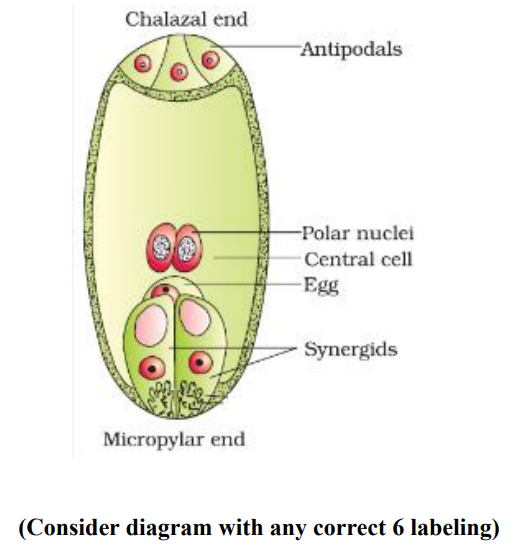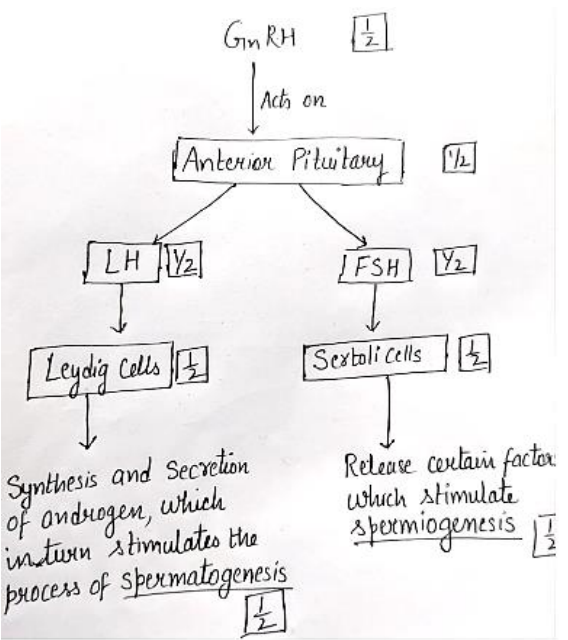Question
(a)
i) Describe the arrangement of nuclei and cells in a mature embryo sac of a typical angiosperm.
ii) Explain the devices the flowering plants have developed to prevent the following types of pollination :
1. Prevents both autogamy and geitonogamy
2. Prevents autogamy, but not geitonogamy
(b)
i) Write the specific location of the following in the testis in humans :
1. Sertoli cells
2. Leydig cells
ii) Explain the coordination between Gonadotropins, Leydig cells and Sertoli cells and their role in spermatogenesis.
Answer :
(a)
i)
A typical angiospermic embryo sac is 7 celled and 8 nucleated, three cells are grouped together at the micropylar end to constitute the egg apparatus, egg apparatus has two synergids, and one egg cell, three cells are at the chalazal end and are called antipodals, the seventh cell is the large central cell with two polar nuclei.
//
ii)
1. Male and Female flowers are present on different plants (dioecy)/ Self incompatibility
2. Production of unisexual flowers by the plant/ both male and female flowers are present on the same plant/Monoecious / non synchronization of pollen release and stigma receptivity/ Anther and stigma are placed at different positions ( Herkogamy)
or
(b)
i)
1. Within seminiferous tubule
2. In interstitial spaces / between the seminiferous tubules
ii)
//
The increased levels of GnRH, then acts at the anterior pituitary gland, and stimulates secretion of two gonadotropins – luteinising hormone (LH), and follicle stimulating hormone (FSH), LH acts at the Leydig cells, and stimulates synthesis and secretion of androgens which in turn stimulate the process of spermatogenesis, FSH acts on the Sertoli cells, and stimulates secretion of some factors which help in the process of spermiogenesis.


